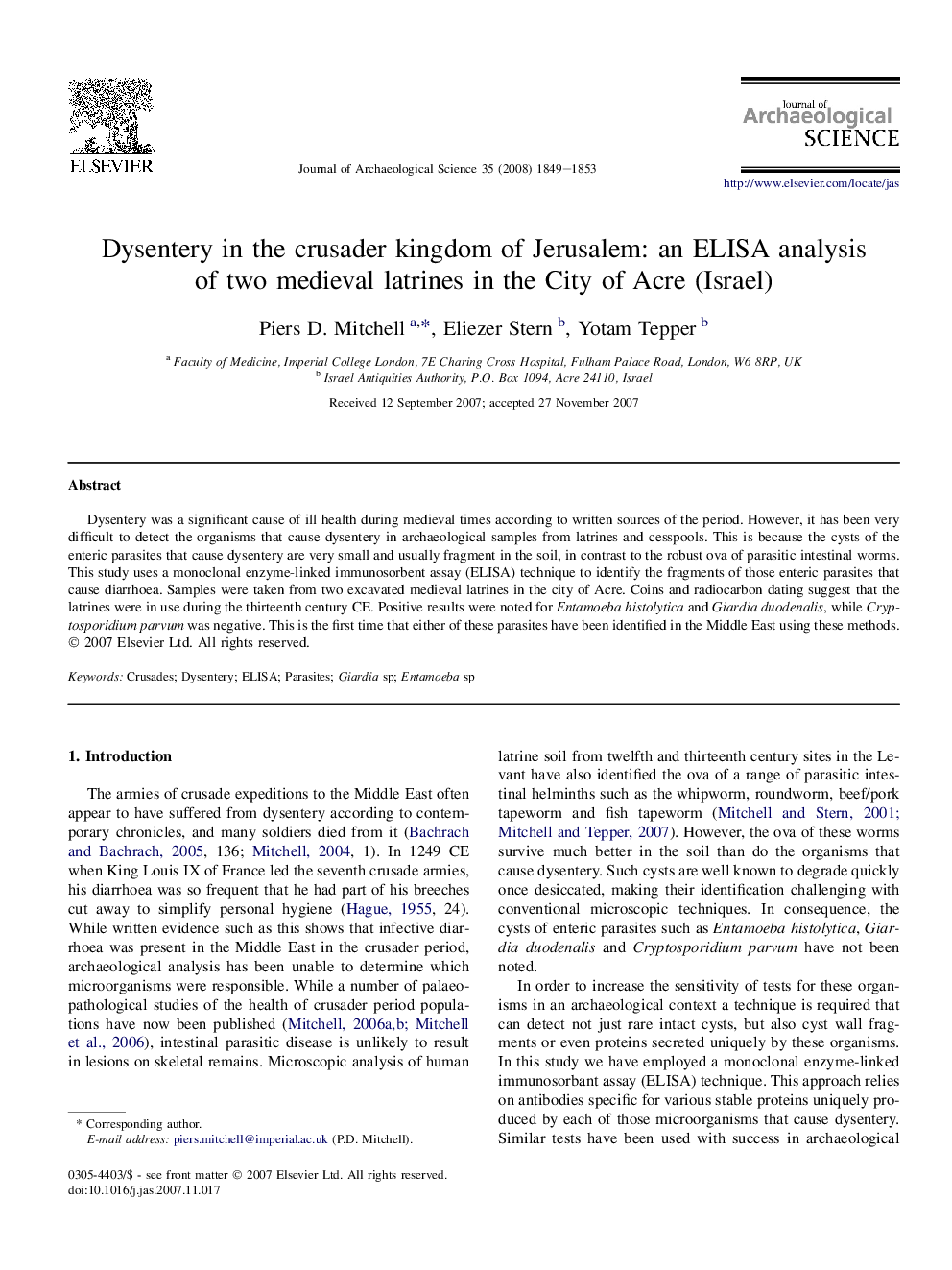| Article ID | Journal | Published Year | Pages | File Type |
|---|---|---|---|---|
| 1037252 | Journal of Archaeological Science | 2008 | 5 Pages |
Dysentery was a significant cause of ill health during medieval times according to written sources of the period. However, it has been very difficult to detect the organisms that cause dysentery in archaeological samples from latrines and cesspools. This is because the cysts of the enteric parasites that cause dysentery are very small and usually fragment in the soil, in contrast to the robust ova of parasitic intestinal worms. This study uses a monoclonal enzyme-linked immunosorbent assay (ELISA) technique to identify the fragments of those enteric parasites that cause diarrhoea. Samples were taken from two excavated medieval latrines in the city of Acre. Coins and radiocarbon dating suggest that the latrines were in use during the thirteenth century CE. Positive results were noted for Entamoeba histolytica and Giardia duodenalis, while Cryptosporidium parvum was negative. This is the first time that either of these parasites have been identified in the Middle East using these methods.
